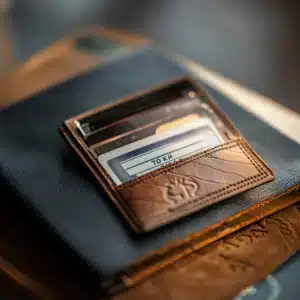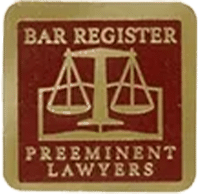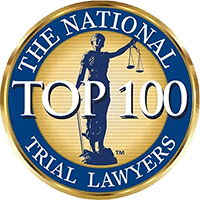
To ride a motorcycle in Oklahoma, you’ll need to get a motorcycle license or have a motorcycle endorsement on your existing driver’s license. Riding a motorcycle is different than driving a car or truck. The state of Oklahoma requires motorcycle riders to prove that they know how to handle a motorcycle safely before allowing them on the road.
Applicants for a motorcycle license or license endorsement in Oklahoma are required to present certain identification documents and proof of insurance to the drivers’ license examiner and pass a series of tests showing driving skill and knowledge of traffic laws. If you don’t have the proper license or endorsement, you could be ticketed for riding your motorcycle illegally. Keep reading to learn more about the motorcycle laws in Oklahoma and the requirements to obtain a motorcycle license.
Many car-motorcycle collisions are caused by automobile drivers who fail to see motorcycles and turn unexpectedly in front of them. Motorcyclists have to remain vigilant for potential accident situations. If you’ve been injured in a motorcycle accident, talk to an experienced Oklahoma motorcycle accident attorney at Edwards & Patterson Law to understand your rights and legal options. Call us or contact us online today.

Motorcycle Accident Lawyer
Contact us today for your free & confidential case review. Our team will help you get the compensation that you deserve.
What Are the Application Steps for Licensed Drivers?

Even if you already have an Oklahoma driver’s license, the state requires you to obtain a motorcycle endorsement for your license before you are legally allowed to ride a motorcycle on the road. This motorcycle endorsement, known as an “M” endorsement for the additional letter you’ll receive on your driver’s license, is required for anyone wishing to ride a motorcycle or motor-driven cycle.
According to the Oklahoma Department of Public Safety, a motorcycle is defined as a vehicle with:
- A seat or saddle for each rider
- No more than three wheels in contact with the ground, excluding a tractor
- An engine with a piston displacement of 150 cc or greater
Similarly, the Oklahoma DPS defines a motor-driven cycle as a vehicle with:
- A seat or saddle for each rider
- No more than three wheels in contact with the ground
- A combustion engine with between 35 cc and 150 cc of engine displacement or an electric motor that generates more than 1,000 watts of power
If the vehicle you want to ride meets either of these definitions, you’ll need a motorcycle endorsement to go along with your existing driver’s license.
To obtain your motorcycle endorsement, you will need to appear before a state driver’s license examiner and pass a written exam, vision test, and driving test. If you have taken an approved course from the Motorcycle Safety Foundation, you can skip the written exam and driving test.
Along with the required tests, drivers applying for a motorcycle endorsement will need to present the following documents for identification:
- A primary ID approved by the state. This can be your existing driver’s license, though there are other acceptable forms of ID as well.
- Your Social Security number.
- If you’ve changed your legal name, you’ll need to bring documents that verify your prior legal name and how it connects to your current name (marriage certificate, divorce certificate).
- If you’ve completed a Motorcycle Safety Foundation course, you’ll need to bring in your form proving you passed the course.
- If you’re taking the driving test at the Department of Motor Vehicles, you’ll need to show proof of valid motorcycle liability insurance.
- If your motorcycle does not have a sufficient windshield, you’ll need to wear goggles that meet state standards or bring in your own face shield.
If you have not taken a Motorcycle Safety Foundation course and passed the written exam, you can request a Motorcycle Learner Permit. You must hold this permit for at least 30 days before you can apply for a full motorcycle endorsement on your license.
Riders with a Motorcycle Learner Permit can operate a motorcycle as long as they are with another rider with a motorcycle endorsement who is at least 21 years old. After the 30-day learning period has passed, you can go back to the DMV for your full motorcycle endorsement.
What Are the Application Steps for Motorcyclists Between 14 and 16 Years Old?
Those between 14 and 16 years old who wish to obtain a motorcycle license have to go through a slightly different set of steps. First, you’ll have to take a basic riding skills class test that has been approved by the state. Then you’ll have to appear before a driver’s license examiner and take a vision test as well as a written exam.
If you pass the test, you will be issued a Motorcycle Learner Permit. If you are under the age of 16, you have to hold this permit for at least 30 days before you can apply for a full motorcycle license.
A motorcycle rider between age 14 and 16 with a learner permit can ride a motorcycle between the hours of 4:30 a.m. and 9 p.m. The motorcycle cannot have an engine bigger than 300 cc, and the rider must wear an approved helmet at all times. A rider with a learner permit must also be accompanied by another rider who is at least 21 years old and who has a valid motorcycle license.
Once you’ve held your learner permit for at least 30 days, you can apply for a motorcycle-only license. You will have to take another driving test unless you can show you’ve taken an approved safety course from the Motorcycle Safety Foundation.

Hurt in A Motorcycle Accident?
Contact us today for your free & confidential case review. Our team will help you get the compensation that you deserve.
What Are the Application Steps for Motorcyclists Over 16 Years Old Without a Standard Driver’s License?
The process for getting a motorcycle license if you’re over 16 years old is similar to the process if you already have a standard driver’s license. You’ll need to take the following steps:
- Bring the necessary documents to a driver’s license examiner, including a state-approved primary ID and your Social Security number.
- If you’re under the age of 18, you’ll need proof that you meet current school enrollment requirements and that you’ve completed a state-approved basic motorcycle riding course. You will also need a parent or legal guardian present.
- If you’ve changed your legal name to something other than what is shown on your Social Security card, you’ll need to bring along the appropriate documents showing your new name.
Once you’ve provided the necessary documents, you’ll be issued a Motorcycle Learner Permit. After holding this permit for 30 days, you can apply for a full license. You will need to take a driving test unless you can show you’ve completed a Motorcycle Safety Foundation driving class.
How to Prepare to Get Your Motorcycle License in Oklahoma?
Here’s what you should do if you’re interested in getting your motorcycle license in Oklahoma:
- Make sure you have all the necessary documents before you arrive at the DMV, including your state-approved ID, Social Security card, and any documents showing a change to your legal name.
- Get to the DMV early, as wait times can build quickly.
- Be prepared for a vision test. If you wear glasses or contacts, make sure you bring them to the DMV.
- Study the written exam and skills test. If you’ve completed a state-approved course in advance and want these tests waived, make sure you bring your proof of completion with you.
If you have questions about obtaining your motorcycle license, or if you’ve been involved in a motorcycle accident, contact the team at Edwards & Patterson Law today by calling our office or visiting our contact page.
Last updated Thursday, March 27th, 2025













